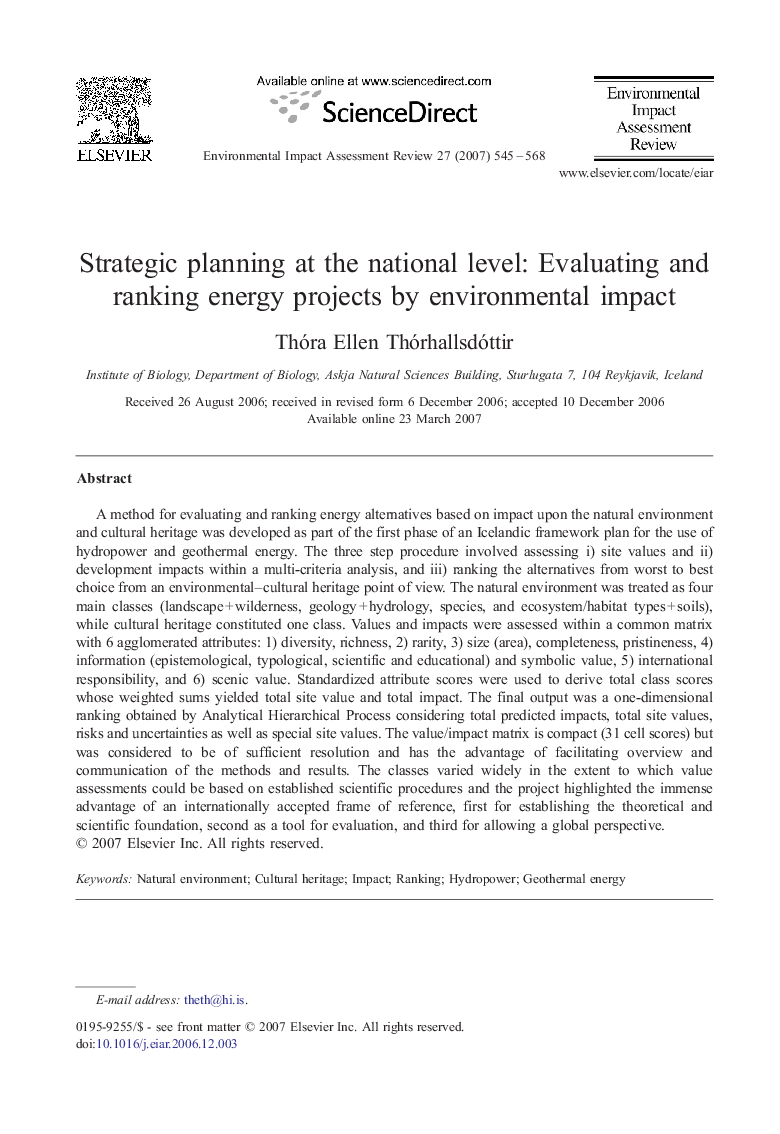| کد مقاله | کد نشریه | سال انتشار | مقاله انگلیسی | نسخه تمام متن |
|---|---|---|---|---|
| 1053247 | 946538 | 2007 | 24 صفحه PDF | دانلود رایگان |

A method for evaluating and ranking energy alternatives based on impact upon the natural environment and cultural heritage was developed as part of the first phase of an Icelandic framework plan for the use of hydropower and geothermal energy. The three step procedure involved assessing i) site values and ii) development impacts within a multi-criteria analysis, and iii) ranking the alternatives from worst to best choice from an environmental–cultural heritage point of view. The natural environment was treated as four main classes (landscape + wilderness, geology + hydrology, species, and ecosystem/habitat types + soils), while cultural heritage constituted one class. Values and impacts were assessed within a common matrix with 6 agglomerated attributes: 1) diversity, richness, 2) rarity, 3) size (area), completeness, pristineness, 4) information (epistemological, typological, scientific and educational) and symbolic value, 5) international responsibility, and 6) scenic value. Standardized attribute scores were used to derive total class scores whose weighted sums yielded total site value and total impact. The final output was a one-dimensional ranking obtained by Analytical Hierarchical Process considering total predicted impacts, total site values, risks and uncertainties as well as special site values. The value/impact matrix is compact (31 cell scores) but was considered to be of sufficient resolution and has the advantage of facilitating overview and communication of the methods and results. The classes varied widely in the extent to which value assessments could be based on established scientific procedures and the project highlighted the immense advantage of an internationally accepted frame of reference, first for establishing the theoretical and scientific foundation, second as a tool for evaluation, and third for allowing a global perspective.
Journal: Environmental Impact Assessment Review - Volume 27, Issue 6, August 2007, Pages 545–568